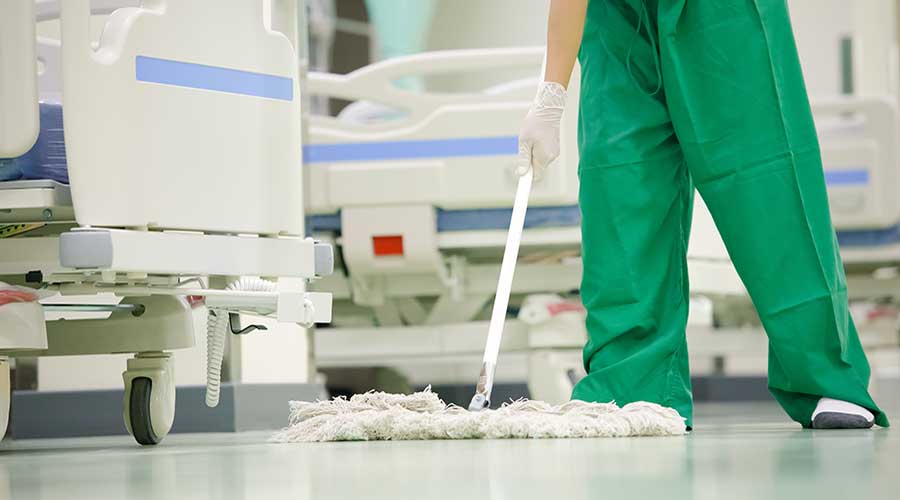There was a time when infection was considered an inevitable risk in hospitalization. Now enough evidence, enough data and more than enough studies exist for us to know that nearly all infections are preventable when doctors and staff adhere to evidence-based protocols. This puts physicians, hospitals and hospital board members in a new legal situation.
Infection preventionist and epidemiologists believe that cleaning is important in preventing hospital-associated infections (HAIs), but they do not manage environmental services department budgets and have failed to stop the erosion of those budgets. Comprehensive cleaning disrupts the chain of infection between common microorganisms associated with HAIs and their ability to survive in the hospital environment.
The belief that infections are unavoidable has shielded hospitals and doctors from liability for decades. But not in the future. Hospital infections could be the next asbestos.
Most victims or their survivors who sue will not be able to prove precisely how the bacteria entered their bodies while they were hospitalized. Soon, it might not matter. Jurors will be told that the defendant hospital failed to implement guidelines provided by the U.S. Centers for Disease Control and Prevention (CDC) or such groups as the Society for Healthcare Epidemiology of America, the Association for Professionals in Infection Control or the Association for Healthy Environments.
Related Content: HAIs Spread in Community, Complicating Infection Control
Consequently, the argument will go, these defendants should be deemed negligent and held liable for patients’ infections. Experts warn that “community standard of care” is an adequate defense if hospitals fail to implement recently published, nationally available, evidence-based best practices.
What is the cost of not providing a safe, clean and disinfected hospital environment? It could be millions of dollars. One court awarded $13.5 million to the family of a patient who died of flesh-eating bacteria that she contracted during chemotherapy treatment in a facility. In another case, a patient was awarded $2.58 million because he contracted methicillin-resistant Staphylococcus aureus (MRSA) in a hospital.
Although cleaning and hygiene issues might not always be the subject of such litigation, there is little doubt that poorly cleaned facilities are contributing factors to serious disease transmission. When jurors are shown photos of dried feces or blood on a patient’s restroom wall or dust accumulation on the bottom pan of a gurney in the emergency department or trash cans overflowing next to the patient’s bed, then the inference is that negligence and inattention to sanitary conditions caused the plaintiff’s infection. Just get out the checkbook.
Hospitals might claim that drug-resistant infections are a problem at all hospitals. That argument was used by Jewish Hospital in Louisville, Kentucky, which faced numerous lawsuits. Among those were 69 filed by one lawyer, Joseph White, who has made unclean hospital conditions an attention-grabbing graphic and a sympathetic explanation for why his clients contracted infections.
Hospitals that act decisively to insure safe, clean and disinfected environments for patient care will have the best insurance against costly damage awards. First, do no harm.
J. Darrel Hicks, BA, MESRE, CHESP, Certificate of Mastery in Infection Prevention, is the past president of the Healthcare Surfaces Institute. Hicks is a nationally recognized subject matter expert in infection prevention and control as it relates to cleaning. He is the owner and principal of Safe, Clean and Disinfected. His enterprise specializes in B2B consulting, webinar presentations, seminars and facility consulting services related to cleaning and disinfection. He can be reached at darrel@darrelhicks.com. Learn more at www.darrelhicks.com.

 Design Plays a Role in the Future of Healthcare
Design Plays a Role in the Future of Healthcare Cedar Hill Regional Medical Center GW Health Officially Opens
Cedar Hill Regional Medical Center GW Health Officially Opens Designing Healthcare Facilities for Pediatric and Geriatric Populations
Designing Healthcare Facilities for Pediatric and Geriatric Populations Kaiser Permanente Announces New Hospital Tower at Sunnyside Medical Center
Kaiser Permanente Announces New Hospital Tower at Sunnyside Medical Center Building Disaster Resilience Through Collaboration
Building Disaster Resilience Through Collaboration